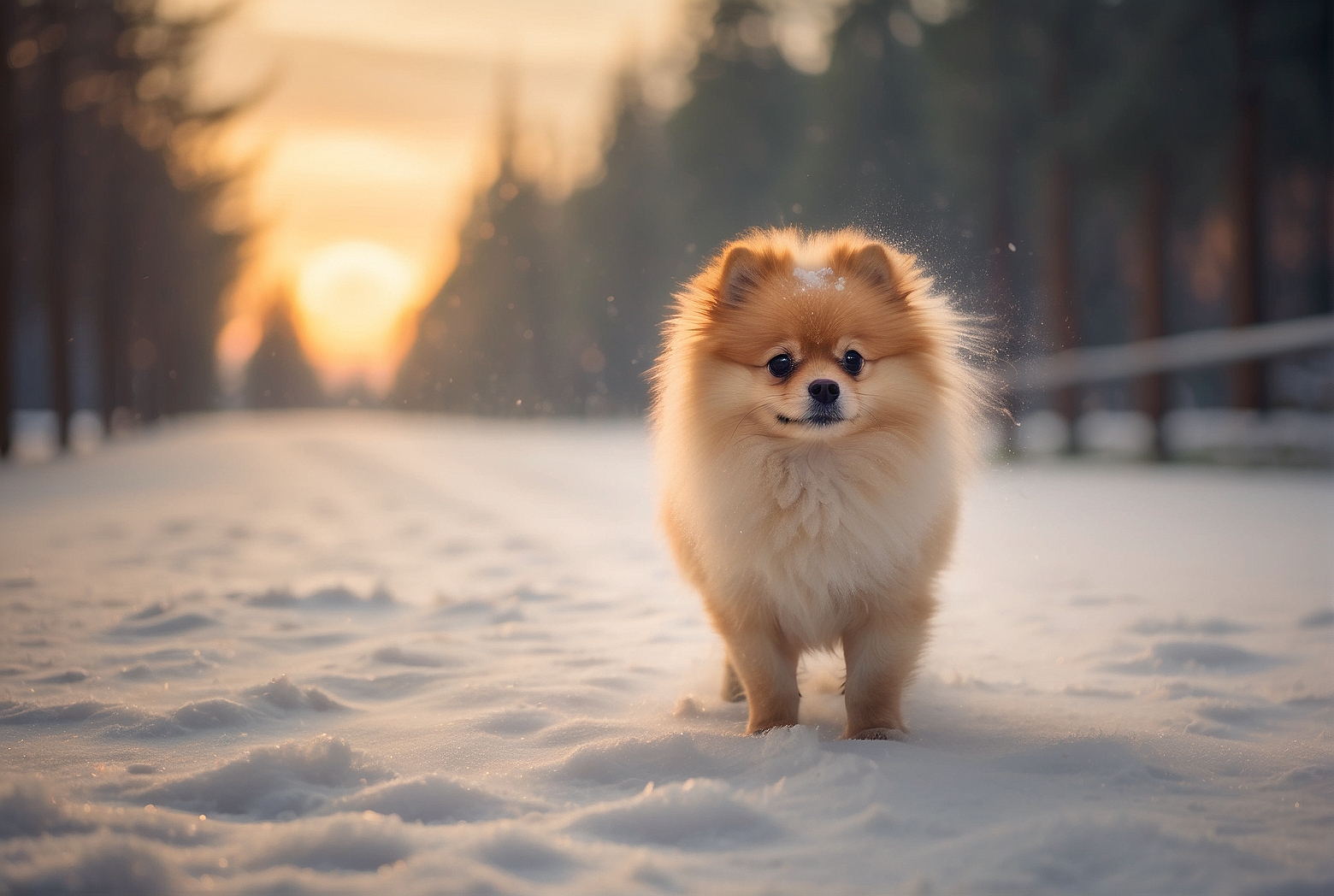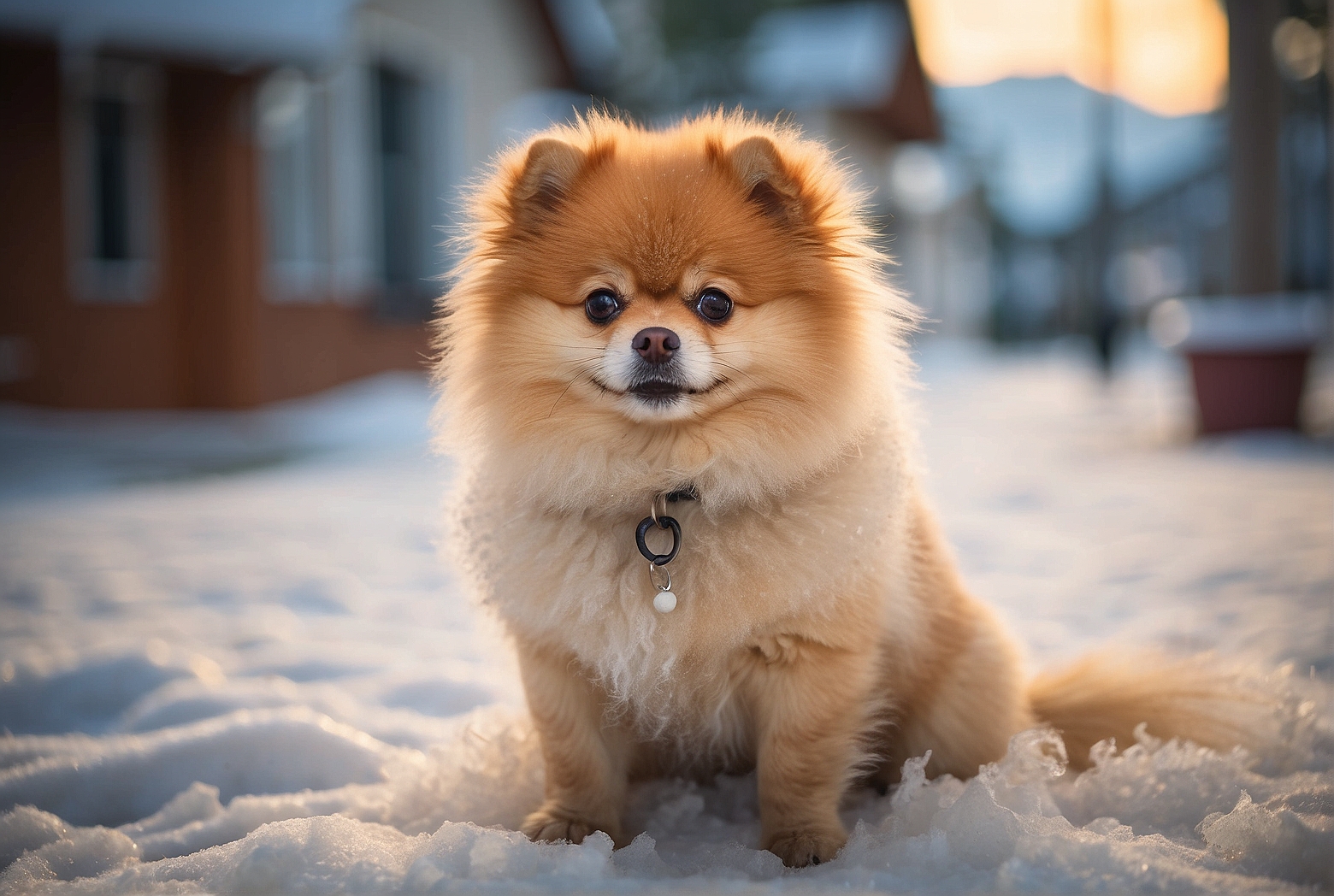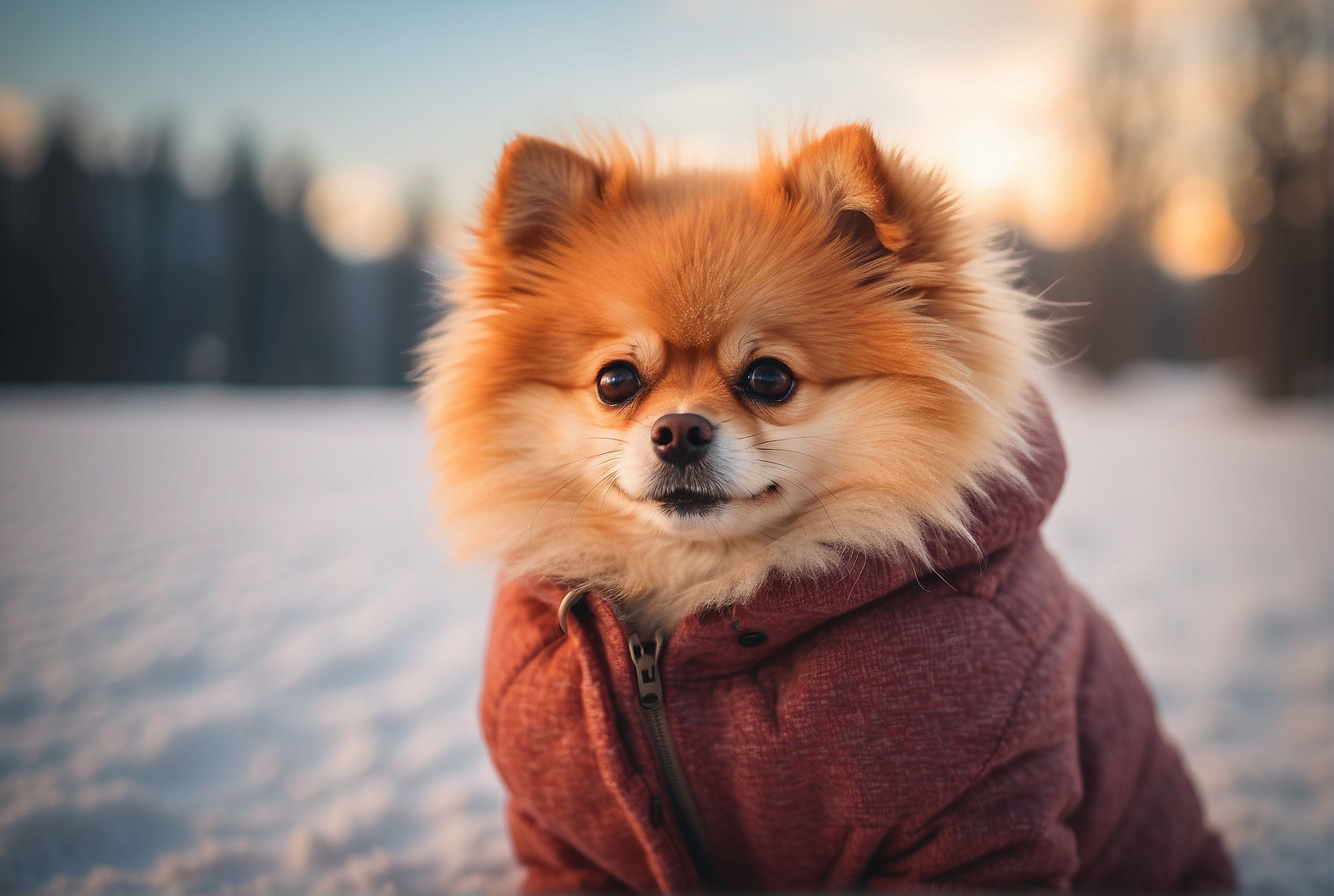Imagine fluffy, adorable Pomeranians frolicking in the snow, their tiny paws leaving delicate imprints. But as the snow falls, you start to wonder: do these little furballs actually enjoy the cold? In this article, we take a closer look at whether Pomeranians are naturally suited for chilly temperatures or if they secretly long for the warmth of a cozy fireplace. So, grab a cup of hot cocoa, settle in, and let’s debunk the mystery surrounding our furry friends’ preference for cold weather.
Pomeranian Breed Overview
History of the Pomeranian Breed
The Pomeranian breed, also known as the Pom, originated from the region of Pomerania, which is now parts of Poland and Germany. These delightful little dogs are descendants of large herding dogs from the Arctic regions. It was during the 18th century when the Pom’s size dramatically decreased from their larger ancestors, making them attractive companions for royalty and high society members.
Physical Characteristics of Pomeranians
Pomeranians are small dogs with a compact and sturdy build. Despite their tiny size, they have a bold and lively appearance. They usually stand around 6 to 7 inches tall and weigh between 3 to 7 pounds. One of the most distinctive features of Pomeranians is their luxurious double coat, which comes in a variety of colors such as orange, black, white, cream, and sable. Their expressive eyes, fluffy tails, and erect ears add to their overall charm.
Behavioral Traits of Pomeranians
Pomeranians are renowned for their cheerful personalities and friendly nature. They are highly intelligent and eager to please their owners, making them easy to train. Pomeranians thrive on attention and love to be the center of their family’s world. Despite their small size, they are often bold and fearless, always ready for an adventure. Pomeranians can sometimes be wary of strangers, but with proper socialization from an early age, they can be sociable and amicable companions.
Understanding Cold Weather
What Constitutes Cold Weather
Cold weather is a relative concept and can vary depending on where you live. Generally, temperatures below 45 degrees Fahrenheit (7 degrees Celsius) can be considered cold for Pomeranians. However, keep in mind that individual tolerance to cold can vary, and factors such as coat thickness, age, and health can affect how a Pomeranian responds to chilly conditions.
Effects of Cold Weather on Dogs
Cold weather can pose certain risks to dogs, including Pomeranians. Prolonged exposure to cold temperatures can lead to hypothermia, frostbite, and other cold-related health issues. It’s important to understand the signs of discomfort and take appropriate measures to protect your furry friend from the cold.

Natural Adaptation of Pomeranians
Origin of Pomeranians in Arctic Regions
Pomeranians have ancestors that lived in the Arctic regions, where freezing temperatures were the norm. These dogs were bred to withstand the harsh conditions of these environments. Over generations, they developed certain adaptations that enabled them to thrive in cold climates.
Thick Double Coat for Insulation
One of the most notable features of Pomeranians is their thick double coat. This coat consists of a soft, fluffy undercoat and a longer, coarser outer coat. The double coat acts as insulation, providing warmth and protection against the cold. The dense undercoat helps to trap heat close to the body, while the outer coat acts as a barrier, shielding them from wind and moisture.
Pomeranians and Cold Tolerance
Individual Differences in Cold Tolerance
While Pomeranians are generally well adapted to cold weather, it’s crucial to remember that each dog is unique. Some Pomeranians may have a higher tolerance to cold temperatures, while others may feel the chill more easily. Factors such as age, overall health, and individual genetics can influence their ability to handle colder environments.
Factors Affecting Cold Tolerance in Pomeranians
Several factors can affect a Pomeranian’s cold tolerance. Elderly or senior Pomeranians may have a harder time regulating their body temperature, making them more susceptible to the cold. Puppies may also need extra protection as they are still developing their ability to regulate body heat. Additionally, Pomeranians with certain health conditions such as arthritis or a weakened immune system may be more sensitive to the cold.
Signs of Discomfort in Cold Weather
Shivering and Trembling
One of the most obvious signs that your Pomeranian is feeling chilly is shivering and trembling. Shivering is a natural response of the body to generate heat and keep warm. If you notice your Pomeranian trembling excessively, it’s a clear indication that they are feeling cold and require immediate measures to warm up.
Seeking Warmth and Shelter
If your Pomeranian starts seeking warmth by cuddling up next to heat sources, such as radiators or under blankets, it’s a sign that they are feeling the cold. Dogs instinctively seek shelter and warmth when they are uncomfortable. Pay attention to your Pomeranian’s behavior and ensure they have access to a warm and cozy environment.

Behavioral Changes
Cold weather can also affect a Pomeranian’s behavior. If they become more lethargic, less active, or seem generally down, it may be a sign that they are not enjoying the cold weather. Keep an eye out for these behavioral changes and take the necessary steps to improve their comfort.
Protecting Pomeranians in Cold Weather
Providing Adequate Shelter
Adequate shelter is essential for protecting Pomeranians from the cold. Ensure that your Pomeranian has a warm and dry place to stay, away from drafts or direct exposure to cold air. Consider providing them with a cozy dog house or a designated area indoors with their blankets and bedding.
Using Dog Clothing
Dog clothing can be an excellent way to keep your Pomeranian warm during cold weather. Invest in sweaters, jackets, or even dog booties to provide additional insulation. Choose clothing that is specifically designed for dogs and fits properly to avoid restricting their movement or causing discomfort.
Applying Paw Protection
Protecting your Pomeranian’s paws is crucial in cold weather conditions. Snow, ice, and road salt can irritate and harm their sensitive paw pads. Consider using paw wax or dog boots to provide a protective barrier and prevent any discomfort or injury while walking outside.
Pomeranian Exercise and Cold Weather
Adjusting Exercise Routines
During colder weather, it’s important to adjust your Pomeranian’s exercise routines. While they still require regular exercise, it’s essential to be mindful of the temperature and weather conditions. Opt for shorter walks during the coldest parts of the day, and consider indoor playtime or mental stimulation exercises to keep them active and entertained.
Indoor Activities for Cold Days
If going outside isn’t suitable due to extreme cold or inclement weather, there are plenty of indoor activities you can engage in with your Pomeranian. Set up a fun obstacle course, play hide-and-seek, or teach them new tricks or commands using positive reinforcement. Keeping their minds and bodies active indoors will help prevent boredom and cabin fever.
Other Factors to Consider
Age and Health of the Pomeranian
Pomeranians of different ages and health conditions may have different needs when it comes to cold weather. Young puppies, senior dogs, or those with underlying health issues may require extra care and attention in colder temperatures. Consult with your veterinarian to ensure you are providing the best care for your Pomeranian based on their specific needs.
Climate and Temperature Variations
The climate and temperature variations in your region should also be taken into account. If you live in an area with extreme cold or prolonged periods of frigid weather, you may need to take extra precautions to protect your Pomeranian. On the other hand, if you reside in a milder climate, they may be more tolerant of colder temperatures.
Acclimatization to Cold Weather
Pomeranians can gradually acclimatize to colder weather over time. If your Pomeranian is used to warmer conditions, it’s important to give them time to adjust to the changing climate. Gradually introduce them to colder temperatures and monitor their response. With time and proper care, they can adapt to colder weather more comfortably.
Tips for Keeping Pomeranians Warm
Maintaining a Warm Indoor Environment
Keep your home comfortably warm for your Pomeranian. Maintain a temperature that is suitable for their needs, typically between 68 to 75 degrees Fahrenheit (20 to 24 degrees Celsius). Avoid exposing them to drafts or leaving them in cold areas of your home.
Monitoring Body Temperature
Regularly check your Pomeranian’s body temperature to ensure they are warm enough. Feel their ears, paws, and body to evaluate their temperature. If they feel cold to the touch, take immediate measures to warm them up.
Providing Cozy Bedding
A cozy and warm bed is essential for your Pomeranian during cold weather. Choose a bed that offers insulation from the cold floor and consider adding extra blankets or a heated pad for added warmth. Ensure the bedding is clean and dry, as moisture can reduce its insulating properties.
Conclusion
Understanding your Pomeranian’s needs in cold weather is crucial for their safety and comfort. While Pomeranians have a natural adaptation to colder climates, it’s important to consider their individual tolerance, age, health, and other factors. By providing adequate shelter, using appropriate clothing, and taking necessary precautions, you can ensure that your Pomeranian remains happy, healthy, and warm during the colder months. Stay attentive to their behavior and always prioritize their well-being, making their winter experience enjoyable and cozy.
